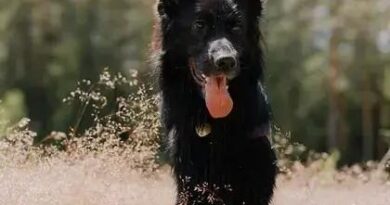What is agility courses
What is Agility Courses?
Agility courses are specially designed obstacle courses for dogs that test their speed, accuracy, and ability to follow commands. These courses consist of various obstacles such as jumps, tunnels, weave poles, and seesaws, which dogs must navigate in a specific order. The sport of agility is not only a fun activity for dogs but also a competitive event where handlers guide their dogs through the course as quickly and accurately as possible.
The History of Agility Courses
The concept of agility courses originated in the late 1970s in the United Kingdom, inspired by horse show jumping events. The first official agility competition took place in 1978, and since then, the sport has grown exponentially in popularity across the globe. Today, agility courses are a staple in dog training and competitions, with various organizations hosting events that attract participants from all walks of life.
Components of Agility Courses
An agility course typically includes a variety of obstacles, each designed to challenge the dog’s physical and mental abilities. Common obstacles include jumps, which can vary in height and width; tunnels, which can be straight or curved; weave poles, which require the dog to zigzag through a series of upright poles; and contact obstacles like seesaws and A-frames, which test the dog’s ability to maintain balance and control. Each obstacle has specific rules regarding how it should be approached and completed.
Training for Agility Courses
Training for agility courses involves teaching dogs to navigate obstacles while responding to their handler’s commands. This training typically starts with basic obedience skills and gradually introduces agility-specific techniques. Handlers often use positive reinforcement methods, such as treats and praise, to encourage their dogs to complete the obstacles successfully. Consistent practice is essential, as it helps build the dog’s confidence and enhances their ability to perform under pressure.
Benefits of Agility Training
Engaging in agility training offers numerous benefits for both dogs and their handlers. For dogs, agility courses provide physical exercise, mental stimulation, and an opportunity to socialize with other dogs. This activity can help improve a dog’s overall behavior, reduce anxiety, and strengthen the bond between the dog and its handler. For handlers, agility training fosters teamwork and communication skills, making it a rewarding experience for both parties.
Agility Competitions
Agility competitions are held at various levels, from local events to international championships. In these competitions, dogs are timed as they navigate the course, and points are awarded based on accuracy and speed. Handlers must demonstrate effective communication and strategy to guide their dogs successfully. Different organizations, such as the American Kennel Club (AKC) and the United States Dog Agility Association (USDAA), have their own rules and regulations governing agility competitions.
Choosing the Right Equipment
When setting up an agility course, selecting the right equipment is crucial for safety and effectiveness. Equipment can be purchased or homemade, but it should always meet safety standards to prevent injuries. Common materials used for agility obstacles include PVC pipes, wood, and durable fabrics. Handlers should also consider the size and skill level of their dog when choosing equipment, as some obstacles may be too challenging for beginners.
Agility for All Breeds
Agility courses are not limited to specific dog breeds; dogs of all sizes and breeds can participate in agility training and competitions. While some breeds, such as Border Collies and Shetland Sheepdogs, are often seen excelling in agility due to their intelligence and athleticism, many mixed-breed dogs also thrive in this sport. The key to success in agility is not solely based on breed but rather on the dog’s training, motivation, and the handler’s ability to communicate effectively.
Getting Started with Agility Courses
For those interested in getting started with agility courses, the first step is to find a local training club or instructor who specializes in agility training. Many clubs offer beginner classes that introduce both dogs and handlers to the fundamentals of the sport. Additionally, online resources and videos can provide valuable tips and techniques for training at home. With dedication and practice, both dogs and handlers can enjoy the exciting world of agility courses.



